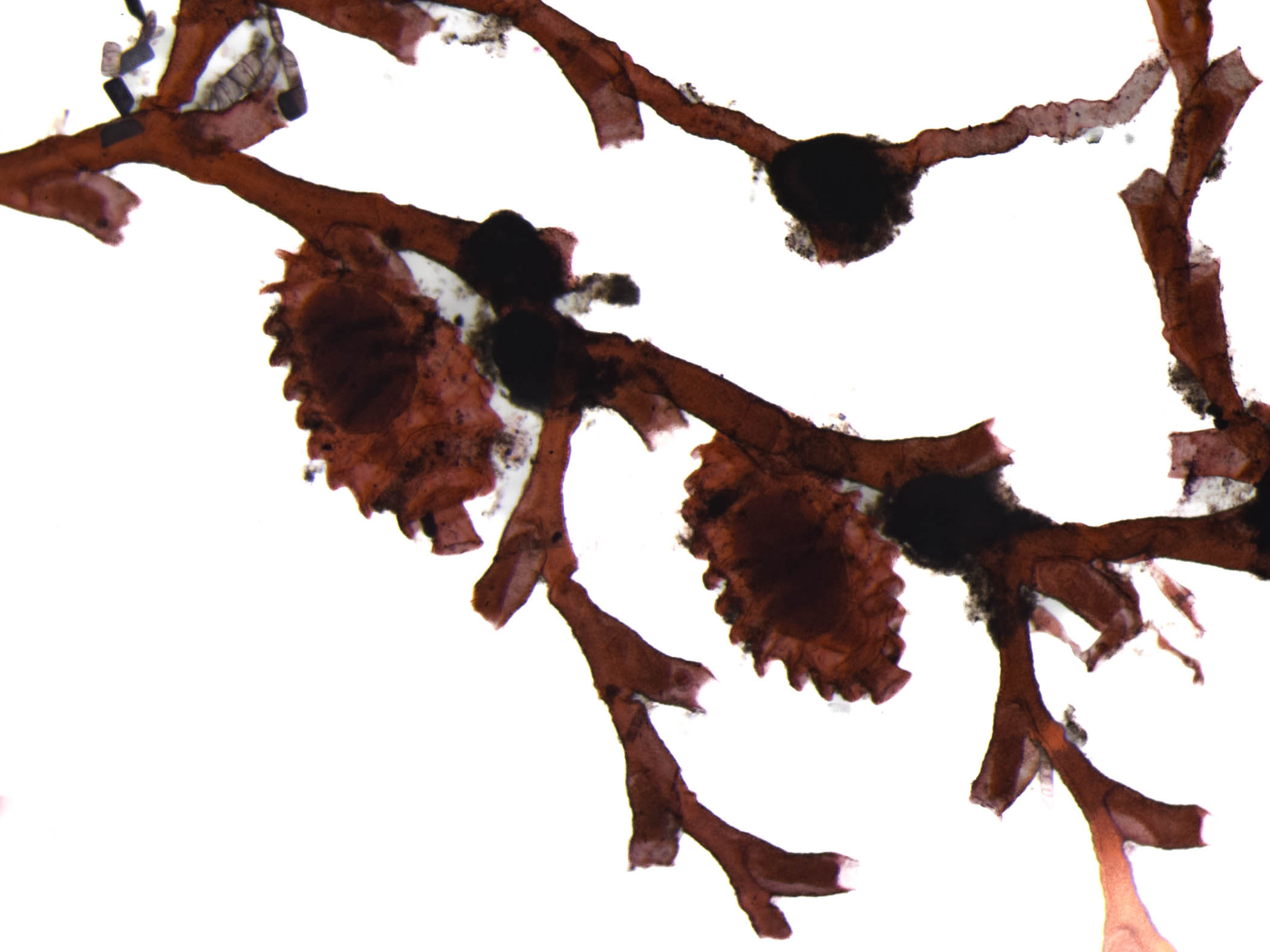| CNIDARIA : Leptothecata : Symplectoscyphidae | SEA ANEMONES AND HYDROIDS |
Symplectoscyphus tricuspidatus (Alder, 1856)
 |
| Symplectoscyphus tricuspidatus |
Description: In this species the main stems are slender and they sometimes divide dichotomously. The side branches are arranged alternately, and often there is secondary branching. The hydrothecae are alternate, one to each internode. They are approximately tubular in shape and the margin bears three denticles. The operculum consists of three triangular flaps. The gonothecae are bell shaped, and taper towards the base, there are conspicuous, deep transverse ridges. The aperature is reported to be funnel shaped with a smooth rim, however this structure is often collapsed in preserved specimens.
Distribution: A northern species in the British Isles, most records are from the northern parts of the North Sea.
Similar Species: Similar in overall appearance to Sertularella species.
Key Identification Features:
- Extensively branched colony
- Three denticles on the margin of the hydrotheca
Distribution Map from NBN: Symplectoscyphus tricuspidatus at National Biodiversity Network mapping facility, data for UK.
iNaturalist: Symplectoscyphus tricuspidatus at iNaturalist World Species Observations database.
GBIF data for Symplectoscyphus tricuspidatus
WoRMS: Symplectoscyphus tricuspidatus at World Register of Marine Species. Accepted name: Symplectoscyphus tricuspidatus (Alder, 1856). AphiaID: 117929.
Classification: Biota; Animalia; Cnidaria; Medusozoa; Hydrozoa; Hydroidolina; Leptothecata; Symplectoscyphidae; Symplectoscyphus
| Previous species | Next species |
| Picton, B.E. & Morrow, C.C. (2024). Symplectoscyphus tricuspidatus. (Alder, 1856). [In] Encyclopedia of Marine Life of Britain and Ireland. https://www2.habitas.org.uk/marbiop-ni/speciesaccounts.php?item=D6840. Accessed on 2025-04-09 |